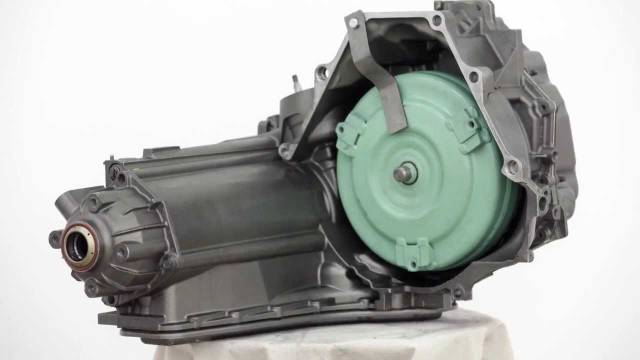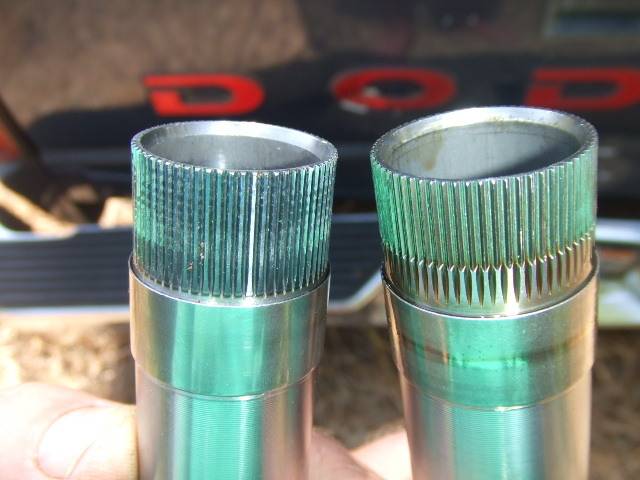Table of Contents
4T65e / 4T65e-HD
The 4T65e and 4T65e-HD are the exact same transmission internally and externally. The only difference between the two is that the HD version has a stronger differential.

This transmission was by far the most common transmission that was bolted to the 3800 from the factory.
It is generally considered to be the achilles heel of the 3800 world since it is one of the reasons why the 3800 engine doesn't have the reputation it deserves.
Details and History
The 4T65e is a 4 speed automatic transmission designed for front wheel drive vehicles from GM.
It is rated for vehicles up to 6,500 lbs and engines producing up to 280 ft. lbs. of torque.
It was first created in 1985 for the Buick Park Avenue. This first version was called the Turbo-Hydramatic 440-T4. Beginning in 1991 it was renamed to 4T60 due to GM's new transmission naming convention
Early versions of the transmission were controlled without electronics. Those versions had a Throttle valve cable and vacuum modulator to control shift points and shift feel. 1993 was the first year that the electronically controlled 4T60e was produced. There was also a 4T60e-HD version as well for supercharged cars.
The 4T60 was known for being quite reliable since there were no electronics to fail. This transmission was not known for being very strong though or for shifting well at higher RPMs. There are some sources that say the 4T60e is known for running relatively hot as well.
The 4T65e was introduced in 1997 to replace the 4T60e. This version had several improvements over the 4T60e version. This is the most widely known version of this transmission since it is the version behind all series 2 and 3 supercharged 3800's.
The 4T65e was offered in an HD variant with a stronger differential for supercharged 3800 cars as well as LS4-equipped cars.
In 2003 the 4T65e saw some valve body and electronic changes. This year was also the first year that it was offered with a hardened 4th gear clutch shaft.
2004 was the first year that the Grand Prix had an option for the LS4 engine. To accomodate for the extra power production of this engine the 4t65e was equipped with a set of hardened drive chains.
Common Issues
Under stock power levels the 4t65e is actually a pretty reliable transmission. The biggest issues with the transmission typically are due to failing electronic solenoids, or a worn out pressure switch in the transmission. This usually will need to be done around the 150,000 mile range for most cars.
Typically the clutches and other internals will last for quite a long time. Usually replacing the solenoids will allow the transmission to last quite a bit longer without doing a full rebuild.
The only hard part that tends to wear out is the 4th gear clutch shaft. This shaft is a very small shaft on the end with a high spline count. Higher mileage vehicles will start to see the splines become thinner over time until eventually the splines are no longer there.

This issue will typically only result in the loss of 4th gear however with no other oddities associated with it.
Power Handling
Focusing on the 4t65e here..
Generally this transmission will hold up well enough under stock power levels behind a supercharged 3800 engine. Once power levels start to increase though there are two weak links that will break first.
Around the 300 horsepower mark the input shaft and drive chains will typically break. These two parts will typically break around this same power level depending on the car.
There are aftermarket input shafts available to resolve this issue. ZZP offers a 300m input shaft that they have rated to handle 1,000 horsepower, and a 4340 input shaft to handle up to 600 horsepower. Most who have used these input shafts will claim that a 4340 input shaft doesn't seem to be a significant improvement from the factory input shaft.
The 300m input shaft seems to have been able to handle significantly more power. There is a difference in 300m input shafts though, some have a groove cut into them and others do not. The stronger one is the one that is “uncut” however they are getting hard to find. ZZP only sells the cut version now.
There are fewer drive chain alternatives available however that are considered to be strong. The easiest upgrade that seems to have become more popular lately is to utilize the hardened chains from the Grand Prix GXP. It's not clear where the power limit is on this chain yet.
There is also a sing 7/8“ chain available to replace the factory dual chains, however there are reports that this chain is not as strong as it should be for its size. This will however still be stronger than the factory chain.
The strongest chain available is the 1” wide GM Racing chain. This chain however is becoming increasingly hard to find. Those who have this chain have been asking quite exorbitant price tags because of its strength and rarity.
After 300 horsepower..
After those two issues have been sorted out, the next parts that might break would be the output shaft as well as the pump shaft. Both of these have strong replacement parts available from 3800 parts vendors such as ZZP.
Another weak point of the 4T65e is the differential. The factory differential is notorious for breaking during racing applications or when performing burnouts. The way to resolve this issue is to utilize a limited slip differential, however there are not many good options available for this. GM did offer a Torsen differential that seems to be very reliable, however this is another rare part that sellers put a high price tag on.
Because of all of these weak points and limited availability of parts there does not seem to be a bright future for the 4t65e in the modding world.
References:
https://en.wikipedia.org/wiki/Turbo-Hydramatic_125
https://en.wikipedia.org/wiki/GM_4T60-E_transmission